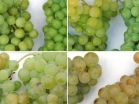"Human visual perception and memory are changeable, the ability to recognize individuals is imperfect, and policies governing law enforcement procedures are not standard -- and any of these limitations can produce mistaken identifications with serious consequences," said Thomas Albright, director of the Vision Center Laboratory at the Salk Institute for Biological Studies and co-chair of the committee that wrote the report. The report focuses on identifications of strangers rather than of family members or others well-known to the witness.
Problems with eyewitness identifications have long been documented, and many of the cases in which DNA evidence later exonerated an innocent person involved at least one mistaken eyewitness. Research in recent decades has revealed many factors that can lead to such mistaken identifications, the report says. Conditions during the commission of the crime such as dim lighting, brief viewing times, stress, or the presence of a visually distracting element such as a gun or knife can influence people's perceptions. Gaps in sensory input are filled by expectations that are based on an individual's prior experiences with the world, which can bias perceptions. Studies also have shown that eyewitnesses are more likely to make mistakes when making an identification among people of another race rather than when making an identification of a person from the eyewitness's own race.
In addition, memory is often an unfaithful record of what was perceived through sight; people's memories are continuously evolving. As memories are processed, encoded, stored, and retrieved, many factors can compromise their fidelity to actual events. Although the individual may be unaware of it, memories are forgotten, reconstructed, updated, and distorted.
Standardized Procedures for Eyewitness IDs Needed
The law enforcement community, while operating under considerable pressure and with limited resources, is already working to improve the accuracy of eyewitness identifications, the report says. However, these efforts have not been uniform and often fall short because of insufficient training, the absence of standard operating procedures, and the presence of actions and statements that unintentionally influence eyewitnesses.
Caution should be exercised in using eyewitness identification procedures and when relying on these identifications in court, the report says. For example, police departments should implement standardized procedures for handling lineups, including using "double-blind" processes to prevent cues and biases from creeping in. Judges should ensure, through expert testimony or jury instructions, that jurors understand factors that may affect the accuracy of an eyewitness identification in a particular case.
Many police departments have begun to use sequential lineups – in which the witnesses are shown one person or photo at a time -- instead of simultaneous lineups, which show several people or photos at once. However, additional research is needed to determine which procedure is superior, the report says. It recommends the establishment of a National Research Initiative on Eyewitness Identification to better understand best practices for conducting lineups and photo arrays, assessing witnesses' confidence levels, and understanding other aspects of eyewitness identifications.
"At this point, more research needs to be done to tell us whether sequential or simultaneous lineups are more effective at producing accurate identifications," said co-chair Jed Rakoff, senior judge on the U.S. District Court for the Southern District of New York. "But there are many practices that have been validated by scientific methods and research that we already know can reduce the likelihood of erroneous identifications, and law enforcement agencies and courts should implement and follow them consistently."
Best Practices for Law Enforcement
To increase the likelihood of accuracy in eyewitness identifications, the report recommends that law enforcement agencies use the following practices in handling eyewitness identifications. Train all law enforcement officers in eyewitness identification. An eyewitness's memory of an incident can be contaminated by a wide variety of influences, including interaction with the police. All law enforcement agencies should provide their officers and agents with training about vision and memory, practices for minimizing contamination, and effective eyewitness identification protocols. Police officers should be trained to ask open-ended questions, avoid suggestiveness, and efficiently manage scenes with multiple witnesses (for example, minimizing interactions among witnesses). Implement double-blind lineup and photo array procedures. Even if a line-up administrator doesn't verbally tell the witness which person in a lineup or photo array is the suspect, he or she could still convey the suspect's identity through unintended body gestures, facial expressions, or other nonverbal cues. Using a double-blind procedure, in which neither the witness nor the administrator knows which person in the lineup or photo array is the suspect, can avoid this inadvertent bias. Develop and use standardized witness instructions. The report recommends the development of a standard set of easily understood instructions to use when engaging a witness in an identification procedure. Witnesses should be instructed that the perpetrator may or may not be in the photo array or lineup and that, regardless of whether the witness identifies a suspect, the investigation will continue. Such instructions should be used consistently in all photo arrays and lineups and could either be pre-recorded or read aloud by administrators. Document witness confidence judgments. Evidence indicates that an eyewitness's level of confidence in their identifications at the time of trial is not a reliable predictor of their accuracy. The relationship between confidence and accuracy is likely to be strongest at the time of initial identification. Law enforcement should document the witness's level of confidence verbatim at the time when she or he first identifies a suspect. Videotape the witness identification process. To obtain and preserve a permanent record of the conditions associated with the initial identification, the committee recommended that video recording of eyewitness identification procedures become standard practice.
Best Practices for Courts
The federal standard governing the admissibility of eyewitness testimony is set forth in the Manson vs. Braithwaite test under the Due Process Clause of the U.S. Constitution. But the test was set out in 1977 before much of the applied research on eyewitness identification had been conducted, and it includes factors that are not diagnostic of reliability. The best guidance for legal regulation of eyewitness identification evidence comes not from constitutional rulings but from the careful use and understanding of scientific evidence, the report says. It recommends best practices for judges to follow in assessing and using eyewitness testimony.
Conduct pre-trial judicial inquiry. Judges have an obligation to ensure the reliability of evidence presented at a trial and should make basic inquiries about eyewitness identification evidence being offered. When assessing the reliability of an eyewitness identification, it is important to know which eyewitness identification procedures the agency had in place and the degree to which they were followed. If indicators of unreliable eyewitness identifications are present, judges should follow applicable procedural law in deciding whether to exclude the identifications or use a lesser sanction. A judge could limit portions of the eyewitness's testimony, for example, or ensure that the jury is provided with a scientific framework within which to evaluate the evidence. Make juries aware of prior identifications. The accepted practice of in-court eyewitness identifications can influence juries in ways that cross-examination, expert testimony, or jury instructions are unable to counter effectively. Moreover, the passage of time since the initial identification may mean that a courtroom identification is a less accurate test of an eyewitness's memory. Whenever the eyewitness identifies a suspect in the courtroom, juries should hear detailed information about any earlier identification, including the procedures used and the confidence expressed by the witness at that time. An eyewitness identification should not typically occur for the first time in a courtroom. Use scientific framework expert testimony. Many scientifically established aspects of eyewitness memory are counterintuitive and may defy expectations, and jurors need assistance in understanding the factors that may affect the accuracy of an identification. In many cases this information can be most effectively conveyed by expert testimony. Judges should have the discretion to allow expert testimony explaining relevant research on eyewitness memory and identifications. Local jurisdictions should make efforts to ensure that defendants receive funding to obtain access to qualified experts. Use jury instructions as an alternative means to convey information. These instructions can be used as an alternative way to convey information about eyewitness identification factors the jury should consider. Jury instructions should, in clear language, explain the relevant principles, allowing judges to focus the instructions on factors relevant to the specific case. Appropriate legal organizations, together with law enforcement, prosecutors, defense counsel, and judges, should convene a body to establish model jury instructions regarding eyewitness identifications.
INFORMATION:
The study was sponsored by the Laura and John Arnold Foundation. The National Academy of Sciences, National Academy of Engineering, Institute of Medicine, and National Research Council make up the National Academies. They are private, independent nonprofit institutions that provide science, technology, and health policy advice under a congressional charter granted to NAS in 1863. The National Research Council is the principal operating arm of the National Academy of Sciences and the National Academy of Engineering. For more information, visit http://national-academies.org. A committee roster follows.
http://national-academies.com/newsroom
Twitter: @NAS_news and @NASciences
RSS feed: http://www.nationalacademies.org/rss/index.html
Flickr: http://www.flickr.com/photos/nationalacademyofsciences/sets
National Research Council
Division on Policy and Global Affairs
Standing Committee on Science, Technology, and Law
Committee on Scientific Approaches to Understanding and Maximizing the Validity and Reliability of Eyewitness Identification in Law Enforcement and the Courts
Thomas D. Albright (co-chair)
Professor and Conrad T. Prebys Chair
Salk Institute for Biological Studies
La Jolla, Calif.
Jed S. Rakoff (co-chair)
Senior Judge
Southern District of New York
U.S. District Court
New York City
William G. Brooks III
Chief of Police
Norwood Police Department
Norwood, Mass.
Joe S. Cecil
Project Director
Division of Research
The Federal Judicial Center
Washington, D.C.
Winrich Freiwald
Assistant Professor
Laboratory of Neural Systems
The Rockefeller University
New York City
Brandon L. Garrett
Roy L. and Rosamund Woodruff Morgan Professor of Law
Law School
University of Virginia
Charlottesville
Karen Kafadar
Commonwealth Professor and Chair of Statistics
University of Virginia
Charlottesville
A.J. Kramer
Federal Public Defender
Public Defender Service for the District of Columbia
Washington, D.C.
Scott McNamara
District Attorney
Oneida County District Attorney's Office
Utica, N.Y.
Charles A. Morgan III
Associate Clinical Professor of Psychiatry
M-3 Forensics
Yale School of Medicine
New Haven, Conn.
Elizabeth A. Phelps
Silver Professor of Psychology and Neural Science
New York University
New York City
Daniel J. Simons
Professor
Department of Psychology
University of Illinois
Urbana-Champaign
Anthony D. Wagner
Director, Stanford Memory Laboratory,
Professor of Psychology and Neuroscience, and
Co-Director, Center Cognitive and Neurobiological Imaging
Department of Psychology
Stanford University
Stanford, Calif.
Joanne Yaffe
Adjunct Associate Professor of Psychiatry
Professor
College of Social Work
University of Utah
Salt Lake City
Staff
Anne-Marie C. Mazza
Study Director




